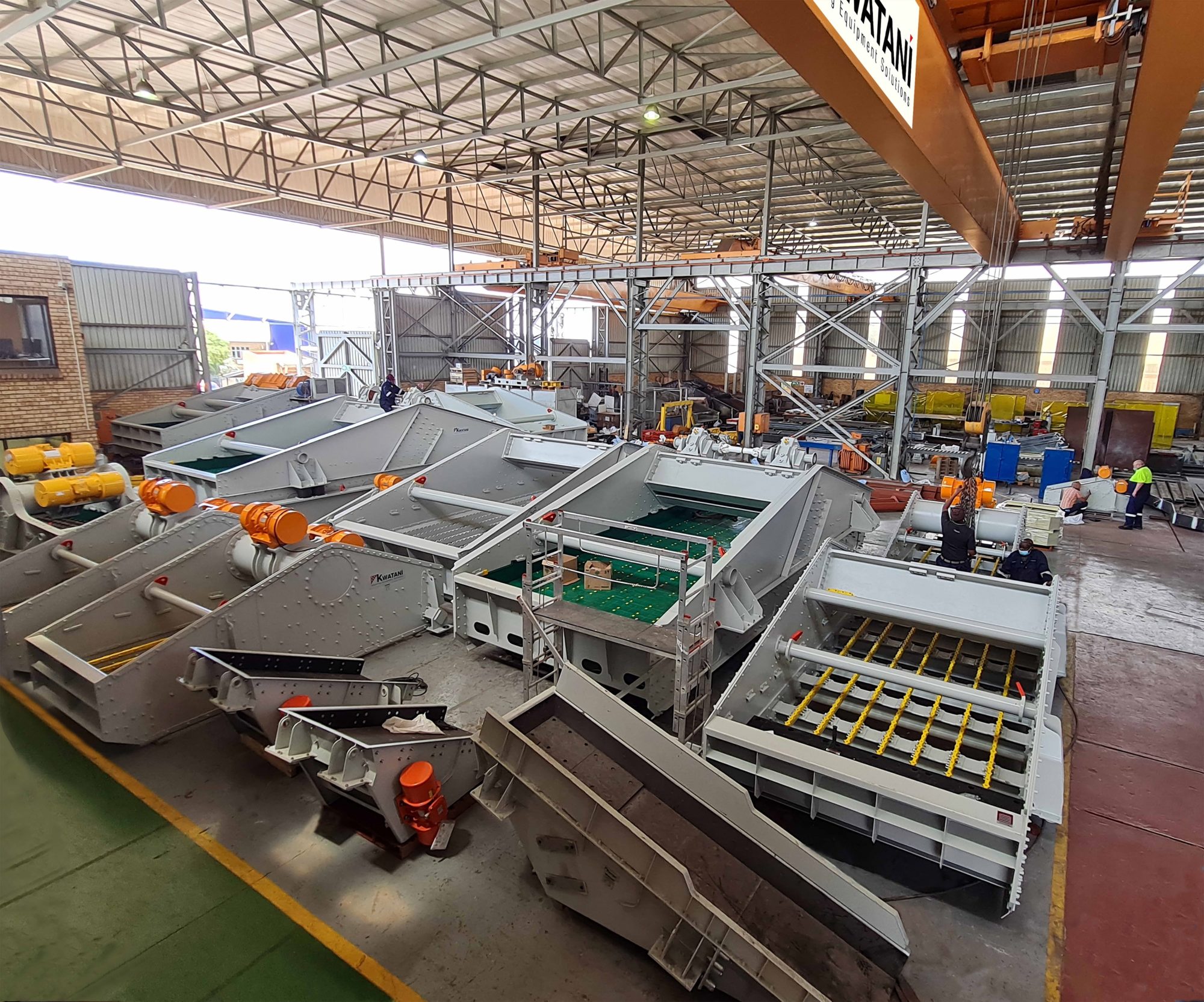Both local and foreign customers – as well as mineral processing OEMs looking for specialised solutions – are set to benefit from the recent acquisition of vibrating screen specialist Kwatani by global multinational Sandvik, according to the South Africa-based company.
The deal highlights South Africa’s world class nodes of excellence in the engineering sector, according to Kim Schoepflin, CEO of Kwatani, who says the Sandvik collaboration is a milestone for local industry. It also contributes significantly to the government’s industrialisation strategy, to foster world-class industries that can compete globally and promote job creation locally.
“The acquisition will allow Kwatani greater access into foreign markets through Sandvik’s extensive distribution network,” she says. “Our modern Kwatani facilities in Kempton Park, accredited in terms of ISO 9001:2015, is now the global engineering and manufacturing base for vibrating screens and feeders for customers.”
She adds that an added benefit for customers is the support they will receive through the Sandvik service network of engineers and technicians in the field. The proven interface between Kwatani and Sandvik equipment – for instance, a Kwatani screen feeding into a Sandvik crusher – will, the company says, add considerable value to customer’s purchasing choices.
“Customers get the best of both worlds, and can feel confident of the efficient dovetailing of our product ranges,” Schoepflin says.
Sandvik brings state-of-the-art resources which further leverage the benefits to Kwatani customers, the company says. This includes access to monitoring and automation processes as well as a depth of research and development into the application of technology like simulators.
Kwatani continues to invest heavily in its resources at its Kempton Park facilities, Schoepflin says, which employ and develop local expertise while sustaining a strong supply chain of local players. Sandvik supports this model, and shares the vision that business sustainability must be based on effective engagement, investment and commitment to the local economy. Kwatani’s local empowerment strategy supports transformation and is compliant with the South African Mining Charter.
“We work closely with local supply partners in our value chain – many of them being small businesses – to embed quality systems and manufacturing capacity,” Schoepflin says. “Customers can therefore be assured of quality throughout our products’ construction, with a reliable, sustainable and cost effective local production base.”
With its cost base rooted largely in the South African economy, Kwatani can offer customers a consistent pricing regime that is not vulnerable to frequent exchange rate fluctuations, it says. This has added to the popularity of Kwatani’s products at home and abroad, with the company twice being recognised in the Exporter of the Year awards hosted by the South African Capital Equipment Export Council (SACEEC).
“Our growth has allowed us to build our complement of competent staff, who are continuously upskilled to stay a step ahead of industry needs – with the help of our in-house training centre,” Schoepflin says.
An important indication of Kwatani’s depth of expertise and field experience is its ability to precision-engineer specific solutions for other OEMs in mineral processing. This extends to highly specialised equipment like sorters, which demand very precise feed characteristics and other protection.
“We are a partner of choice to OEMs whose equipment must operate within tight specifications, and which may have other specific requirements that a standard range of screens would not accommodate,” Schoepflin says.
Kwatani’s approach addresses the three key elements of vibrating screen performance: ore properties, screen design parameters and screening media. Its engineering solutions address all these priorities, Schoepflin says, giving customers optimal results at the lowest cost of ownership.











